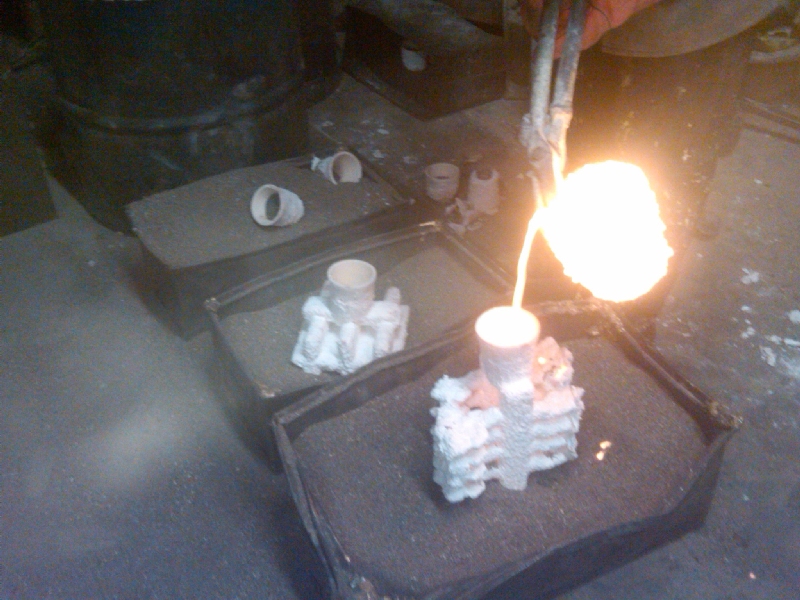Katydid Sculpture Takes Shape
The Katydid, sometimes called a green bush cricket or long horned grasshopper is a family of insects with 8,000 species. In California we see both the greater and lesser angle-winged species which were reference points for Martin Pierce’s latest addition to his insect collection of sculptures. The actual shape of his new piece though owes more of it’s design to the Mediterranean species but even this variety was adapted for stylistic and practical reasons and made with wider wings.
For those interested in the name Katydid it comes from the Greek word “tettix” meaning small cicada. Wikipedia enlightened this writer to the onomatopoeic use of “ tettix” which when repeated makes a sound similar to one made by the Katydid when rubbing it’s wings together. Interestingly, the word Katydid is also onomatopoeic as when repeated “kat-y-did “imitates the stridulation of this insect.
When complete the Katydid will be considerably larger than other members of this species at a substantial 11” high by 16”long.
The progress photos shown here are provided courtesy of Maria Ramirez-Adams a fine art photographer and film maker.
Having decided on the shape of the katydid, Martin enlarged his sketch and drew it as a scaled profile on vellum. The profile was then redrawn on thicker paper but as 6 separate body parts.
The profiles were used as patterns and each body section was crudely cut from solid basswood. Once cut the sections were carved with a variety of wood cutting chisels.
The 2 wings were cut from 1/8” plywood and were soaked in water to make them supple so they be could be twisted and bent around the thorax. Once the correct shape was formed, the wings were clamped and glued at the narrow thorax end and will be used to create a complex 3 part mold. The 2 wings were carved as a unit with a protective brace to prevent their fragile form from breaking. The outer main leaf veins were first carved and then the smaller veins were drawn and carved.






